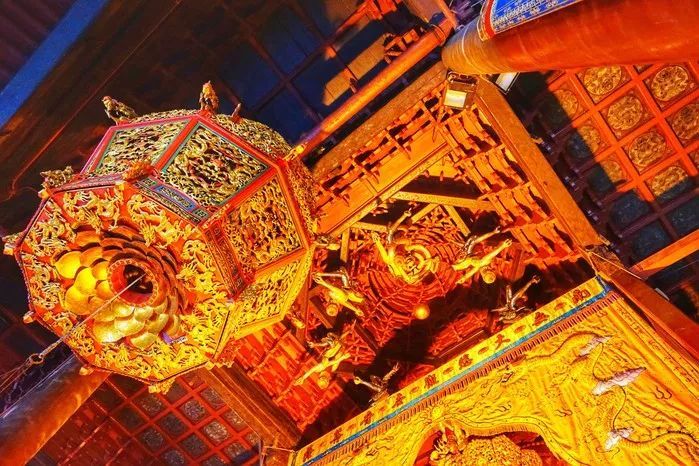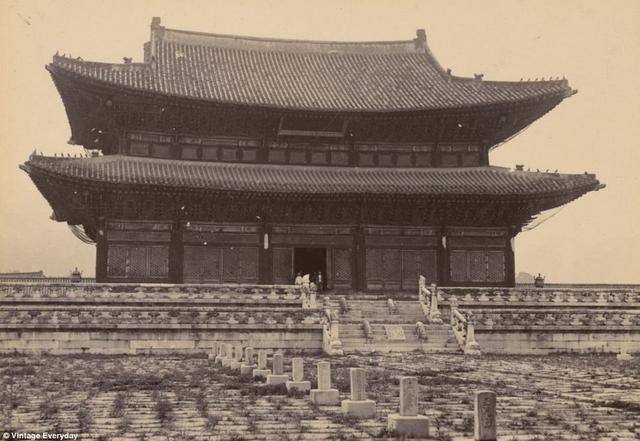What is the relation between the number“nine”and imperial palaces?
3 min read“Nine”is the largest single digit number.In ancient China,this number had a special significance,symbolizing the supreme sovereignty of the emperor.For this reason,this number is often employed in palace structures and designs.For instance,ancient palaces generally consist of nine courtyards.The same is true for the Temple of Confucius in Qufu,Shandong Province.The buildings of the Forbidden City in Beijing are traditionally measured as having a total floor space of 9,900 bays(a room spaces enclosed by four poles).Some even say 9,999bays,but this may be an exaggeration.In the Forbidden City,nails on every door are arranged in nine lines with nine nails;and the doors,windows,stairs and fixtures are also in nines or its multiples.In addition,the watchtowers inside th four corners of the palace compound each have nine beam roofs,18 columns and 72 ridgepoles.The three famous screen walls each have nine dragons.

The number“nine”is not only used on buildings.The New Year’s dinner for the imperial household had 99 dishes.Stage performances had to comprise 99 numbers to celebrate the birthday of an emperor as a sign of good luck and long life.

Did ancient buildings reflect the social system of feudal China?
In ancient China,emperors,empresses,and princesses lived in imperial palaces.
Undoubtedly the palaces rank as the highest class of building according to the ancient social system.The same class goes to the Majestic Buddha Hall in a Buddhist monastery and the Three Trinity Hall in a Daoist temple.These buildings appear typically magnificent because they have yellow glazed tiles,multi-
layer eaves,the wudian roof,decorative paintings,painted dragons,phoenix patterns,and giant red gates.The residence owned by government officials and rich businessmen is called the Large-type Housing Building. These buildings have no glazed tiles,and brackets on top of the columns reflect the social system.The third grade residence is called the Small-type Housing Building used frequently by common people.

The raised base of the ancient architecture also reflects the social system of the feudal society.The ordinary base is simple and flat to support the small or large-type housing buildings.Another kind of the raised base is called the Xumi-Seat-Patterned Base which originally came from the pattern of the bottom base for a statue of Buddha.This Buddhist pattern came into the traditional Chines architecture after Buddhism entered China.This structure supports important halls in the imperial palace complex as well as buildings in a monastery or temple.The purpose is to show the resident’s noble status and rank.In addition,this base has white marble railings.The third kind of raised base is the superfine base that consists of multi-stone-floors;each floor is the Xumi-Seat-Patterned Base circled by jade stone railings.The multi-floor base is only used to support key halls in the imperial palace complex and some key buildings in a monastery or a temple like the Hall of Supreme Harmony in the Forbidden City and the Dacheng Hall in the Qufu Confucian Temple . According to The Canon Collection of the Qing Dynasty ,the raised base is limited to 0.67 meters in height for the residence owned by high officials of the third rank and above,and 0.33 meters in height is for the residence owned by officials of the fourth rank and below.
A jian or bay is the area within 4 pillars;one jian is approximately 15 square meters.According to the ancient social estate system,a main hall in the imperial palace usually is a 9-jian hall.During the Qing Dynasty,the Hall ofSupreme Harmony in the Forbidden City was expanded from 9 jian to 1l jian in dimension to show imperial power.Under the Ming Dynasty,the front,middle and rear halls owned by a top ranking duke were permitted to extend to 7 jian,and his front gate was limited to 3-jian in space.Officials of the first to fifth ranks could have 7-jian major and minor halls.Officials of the sixth and seventh ranks had 3-jian major and minor halls.Ordinary citizens were not permitted to have rooms of more than 3 jian in size although they were not limited to any specific number of rooms they could build.The Qing period saw many changes in these rules,but the system laid down by the Ming remained basically intact.








